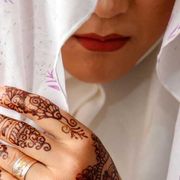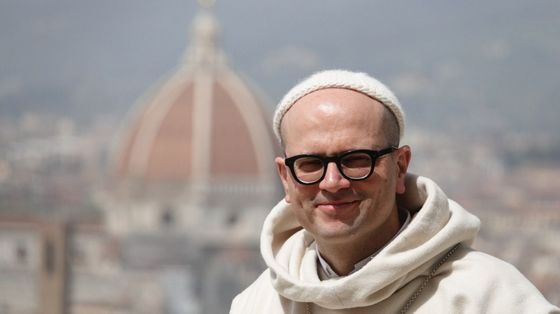Child marriages persist in Uganda despite legal prohibition
di Redazione
The stories of Irene and Zaituni, sold by their families at the ages of 16 and 15 to adult men. The country ranks fifth in the world for forced and early marriages
At the age of 16, Irene (not her real name) was forced into marriage, shattering her dreams of further education in a single evening.
In 2022, the teenager from Ngoma Sub County in Nakaseke district had just completed her Senior Four exams when, one evening, her parents ambushed her. They told her to dress decently, pack a few clothes, and prepare to go somewhere. The parents, who had hired a car, drove about 10 kilometers before arriving at a home where about 20 people had gathered. This was a marriage event organised by a 35-year-old man and his relatives without the girl’s consent.
“They started bargaining when I was in Senior Two. My parents had been offered five cows as a bride price to marry me off. My father told them to wait until I finished lower secondary school and also increase the bride price to 20 cows,” Irene recalls.
Adding, “I cried so much, but they told me I was marrying a rich man who wouldn’t let me suffer. My parents said I couldn’t go against their will and the culture, so I accepted,” said Irene.
Now married with a one-year-old daughter, Irene reflects on her experience with regret and trauma, attributing many of her struggles in marriage to her young age. Despite traditional values, she would not wish the same fate for her daughter because it is not a bed of roses.
Her husband, who was 19 years older than her, criticised her for poor cooking and bedroom skills, and sometimes the disagreements ended in domestic violence. Irene says she could not seek advice from her parents because she was told she must never attempt to leave her husband’s home or question his behavior. She says she was told that such conduct would be tantamount to misbehaving and casting a bad light on their family.
“I was unaware of essential responsibilities, including managing the household, resolving conflicts with my husband, and much more,” Irene adds.
Zaituni, now 26 and a resident of Nakaseke, says she was only 15 when her parents married her off in 2014 in exchange for eight cows. Zaituni had just completed primary school when her parents suddenly started engaging in negotiations, claiming that their investment in her education would never bear fruit. Zaituni became wife number three to a 40-year-old Muslim man.
John Bosco Mugisha, an elder from the region, explains that these marriages are conducted in this manner because it is considered prestigious to marry a virgin girl. He says if they stay in school longer, the husband might find she has already been "tampered with."
“This vice is often driven by poverty, and honestly, the victims of these cultural traditions are going through silent struggles,” said Mugisha.
Joan Luswata, the Nakaseke district probation and child welfare officer, says her office handles at least 30 cases of forced child marriages every four months. Despite existing laws prohibiting such practices, Luswata says securing justice remains a significant challenge because families collude to deny the state prosecutor the required evidence to progress the case files.
“Families also threaten victims to retract their statements on the cases. Files get sanctioned, but they don’t progress because the witnesses withdraw and say they’re not willing to proceed. So, what do you do as a leader?” she asks.
Luswata adds that there is a lack of cooperation among leaders, as many stakeholders are hesitant to take a strong stance against this vice due to fears of alienating themselves from their communities.
The Uganda National Population Census released in December 2024 indicates that up to 533,379 (6.7%) girls between the ages of 10 and 17 are married or cohabitating. The census report cites the Buganda region, where the practice is dominant, with more than 100,000 cases representing 7.7%.
Article 31 of Uganda’s constitution prohibits child marriages. The Children’s Act 2016 defines child marriage as a union involving a person below the age of 18 to live as husband and wife. The act prescribes a maximum sentence of up to 10 years for anyone involved. However, despite the overwhelming numbers, there is no traceable record of successfully prosecuted cases.
Margret Kulabako, the Child and Family Protection Officer at Nakaseke Central Police Station, highlights the challenges faced by law enforcement bodies in combating child marriages, stating that parents often alter their statements and even change their children’s ages, falsely claiming they are above 18.
“Parents usually brainwash their daughters, and when they reach the police, they claim it’s us who forced them to say they were coerced into marriage, making us look like fools,” Kulabako explained.
Kulabako emphasises the need to create a supportive environment that prioritises children’s rights, particularly ensuring that young girls have access to education and the freedom to make their own choices. Uganda has about 52 tribes, each with unique traditions deeply rooted in its history and identity. In rural areas, especially in cattle corridors, these cultural practices are often regarded with great respect, and community members expect them to be respected by all, both within and outside the tribe. Families arrange marriages between boys and girls, men and girls both of age and underage, in exchange for cattle and other dowry because one side gets a wife and another grows their wealth.
In these arranged marriages, offering cattle as dowry or bride price is standard. From the time a girl develops breasts to a visible size, men start seeking negotiations for their bride price with her family. A girl’s consent is disregarded because, traditionally, they are not meant to make decisions on their own.
In these communities, girls are discussed in meetings like commodities, and whoever has the youngest child is regarded as more valuable for marriage due to their perceived innocence. With dowries of eight or more cows depending on the family’s status, communities don’t prioritise the girl’s education or future dreams, for she is trained to be a servant of a man who will pay her dowry, and that is how parents are repaid for the little education secured, if any. Other families settle debts in exchange for their daughters upon failure to pay.
Eric Musaazi, the director of Team Community Development Organization, a child rights advocacy organisation, says every year, their safe space registers about 100 girls in the Greater Luweero region who have endured difficult experiences due to child marriage and early pregnancies.
Musaazi says that Uganda’s government needs to pay attention to the victims and come up with measures to fight the vice, which is deeply entrenched within cultural values yet has a negative impact on the country’s development and girls’ rights.
Statistics from UNICEF, a United Nations agency on children’s rights, indicate that child marriage remains one of the biggest challenges on the African continent, with 41% of girls entering marriage below the age of 18. Further, the Girls Not Brides movement indicates a 9% prevalence by age 15 and 31% by age 18. Uganda is ranked 5th among countries facing this burden.
Child rights organisations say this is a structural challenge that will require systemic frameworks, specifically legal interventions, to stop the practice.
Rose Namugerwa, Programs Officer at Concern for the Girl Child, a rights organisation, says when girls drop out of school for marriage, it does not only affect their lives but impacts society at large because of literacy levels.
Namugerwa also suggests increased school campaigns and putting up whistleblowing structures through which such cases can be reported and handled with utmost confidentiality.
Flavia Alimo, Programs Coordinator at “Just Like My Child,” a Non-Government Organization devoted to saving girls, says that their work of saving girls from being forcefully married off by their parents for cows is challenged by resistance from men, highlighting that their attempts to engage communities in discussions about marriage often fail.
“When we organise community meetings, the moment they hear that the topic of discussion is marriage, they don’t show up, and they look at us as enemies of their culture,” said Alimo.
She says almost all the girls suffer double jeopardy: early marriage and domestic violence. This takes a toll on their emotional health, and yet they are discouraged from associating with anyone until they give birth.
Unlike Irene, Zaitun says she ran away from the marriage after her third child because the husband was abusive. She now rents a two-bedroom house where she stays with her children as she vends food in the local market to support them.
Zaitun hopes that the government will enhance efforts to rescue other girls who become victims every day.
“Her Story”, the women's journalism network. “We give women a voice and thus change society”
The author of this report, Conslata Taaka, is part of the editorial staff of Her Story Uganda, a non-profit network of female journalists who want to promote gender equality, equal representation of women in the media and female empowerment. Her Story journalists are able to access women's most intimate stories, their difficulties and their experiences. Their stories are turned into video interviews, articles and reports that are disseminated through the website herstoryug.org/ and the YouTube channel. The topic covered for Avvenire is a very strong civil and social denunciation; in other cases, Her Story journalists spread messages of encouragement and empowerment through stories of female entrepreneurs, inventors and social workers, such as Juliet, who has developed a method for producing “human” hair from banana leaves, or Claire, who has created a business breeding snails. 'Our vision as agents of change is to see more women and girls talking openly about the issues that matter most to them, expressing themselves without fear of prejudice. We see this as a foundation for increasing their self-esteem,' the journalists explain. The Her Story Foundation Uganda was founded in 2022 thanks to the efforts of Culton Scovia Nakamya, 32, the second of seven siblings, a television journalist and press freedom activist. Among its objectives is to increase the representation of women in the media, which is seen as a major challenge for gender equality. ‘Female identity often disappears, and this has had a profound impact on the representation of women in the media. Her Story disseminates information to women with the aim of transforming them, because information is a catalyst for change.’ Not only that, but the independent network offers training and mentoring to female journalists motivated to enter a sector that is still dominated by men.
© RIPRODUZIONE RISERVATA







